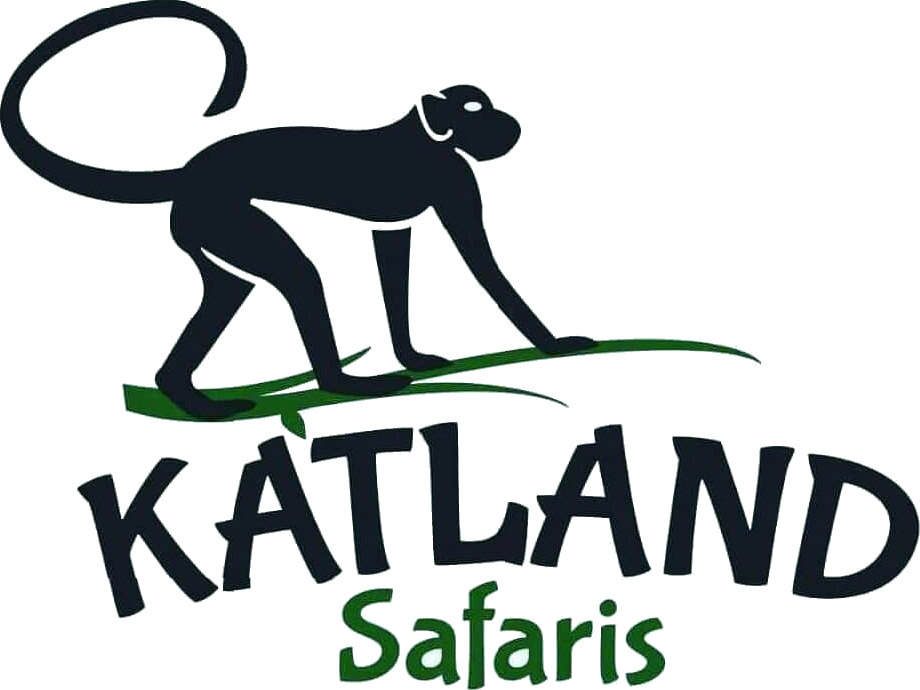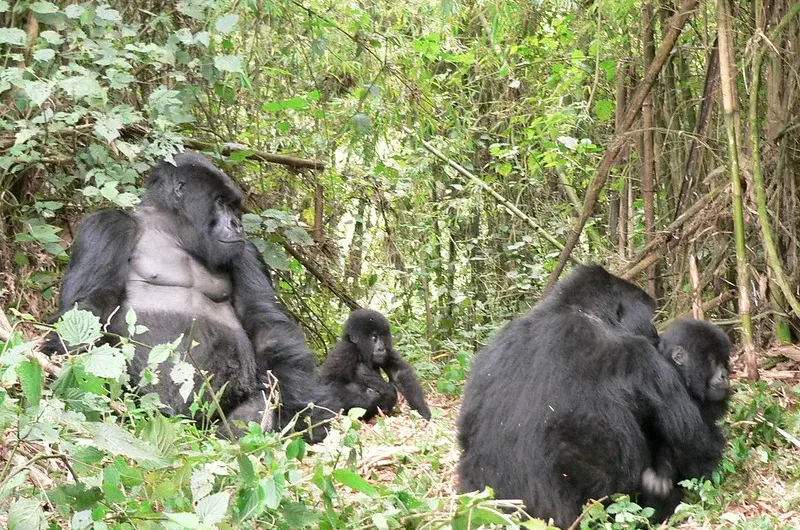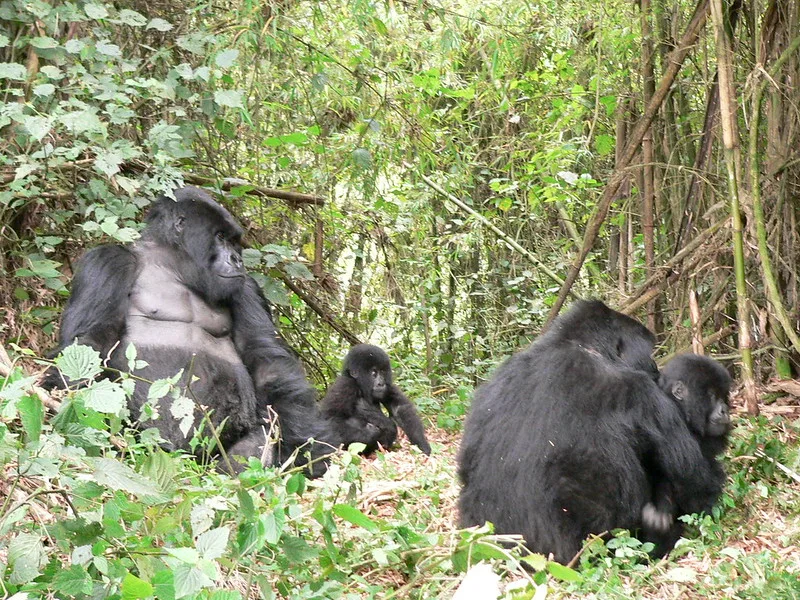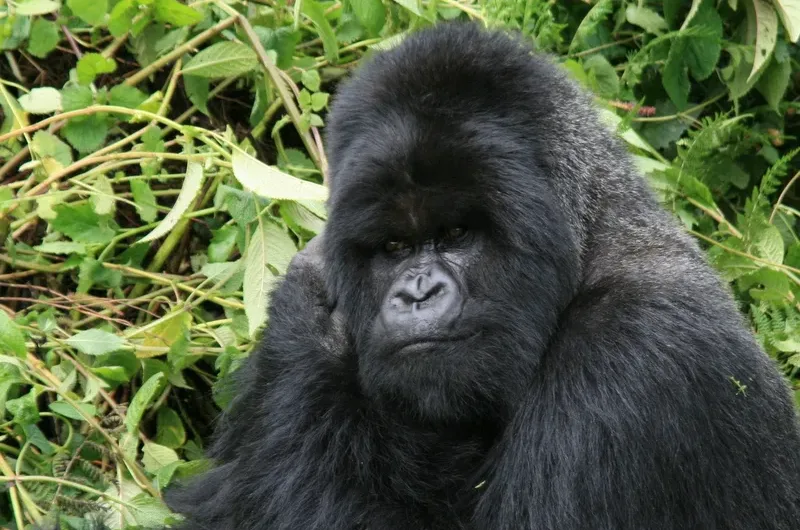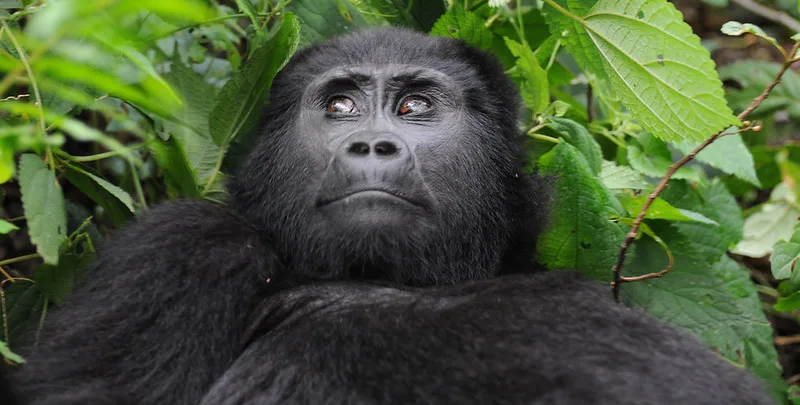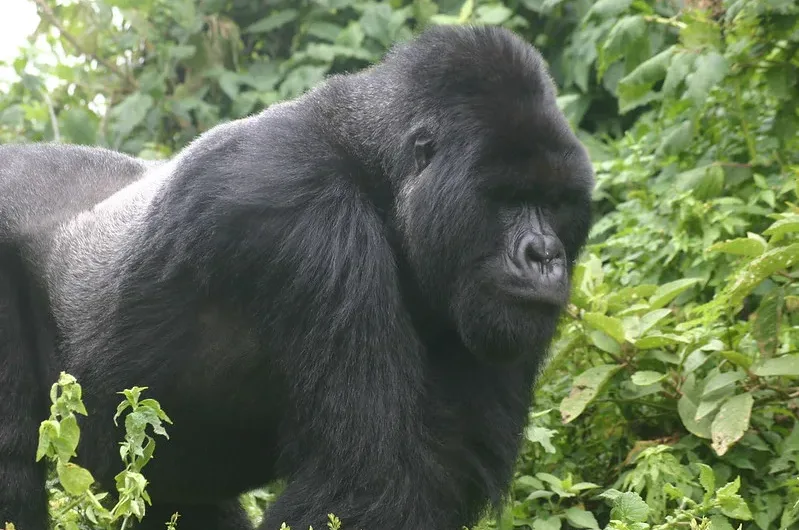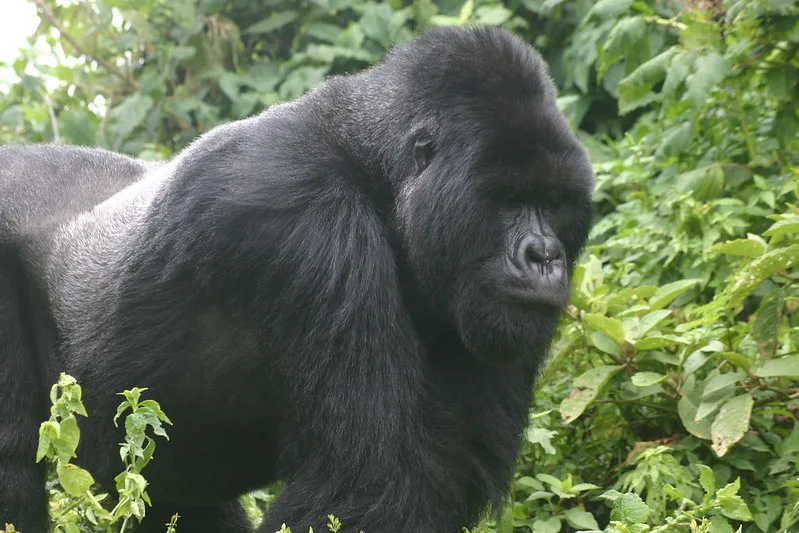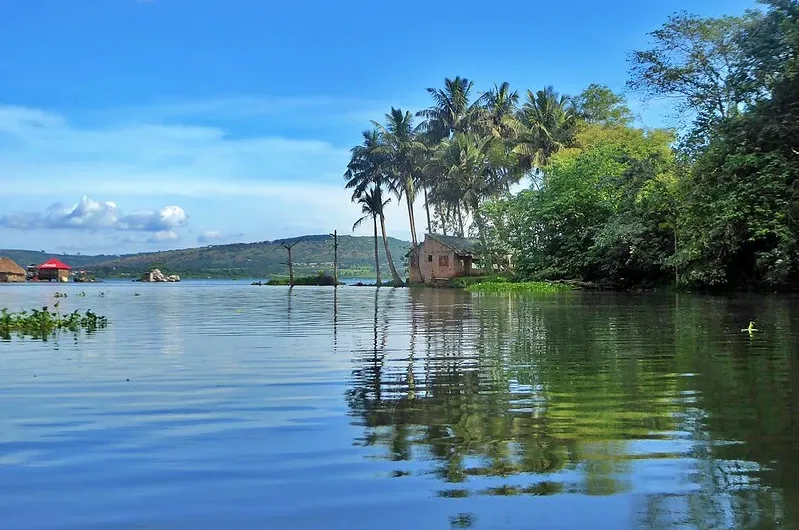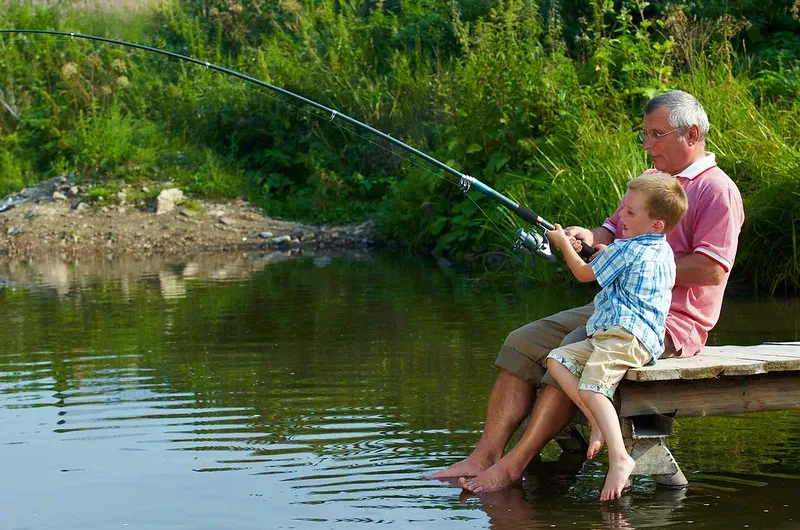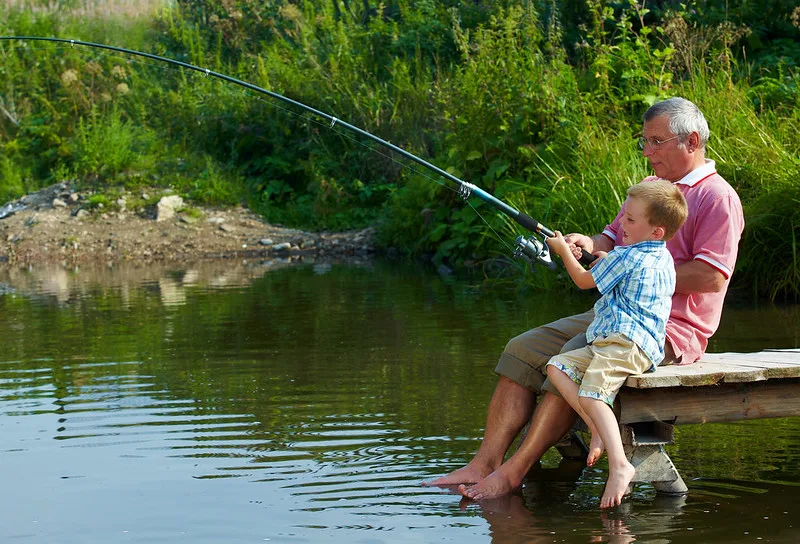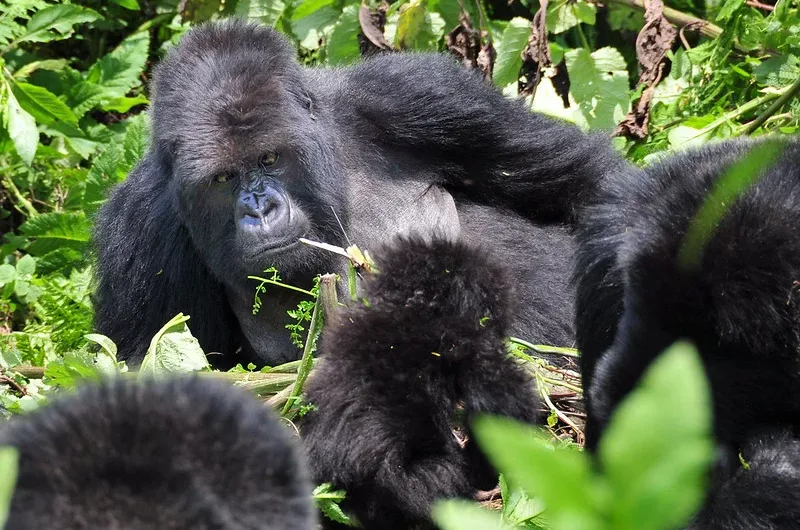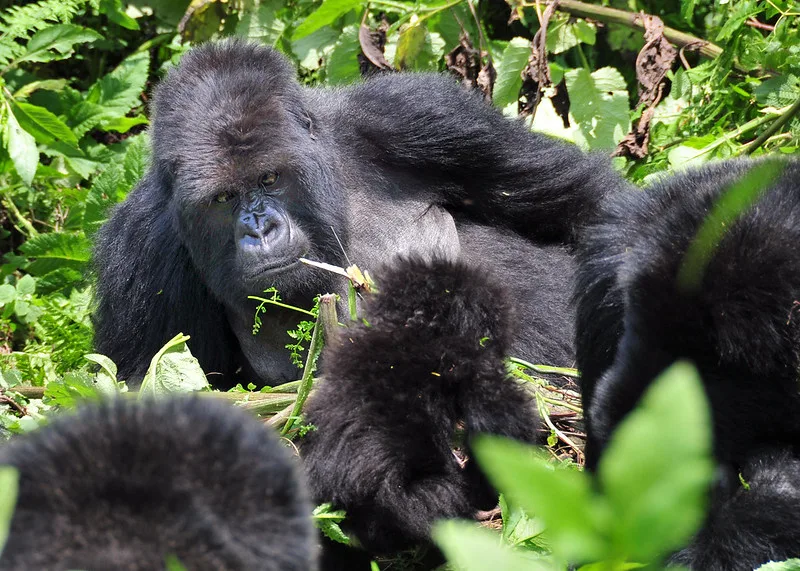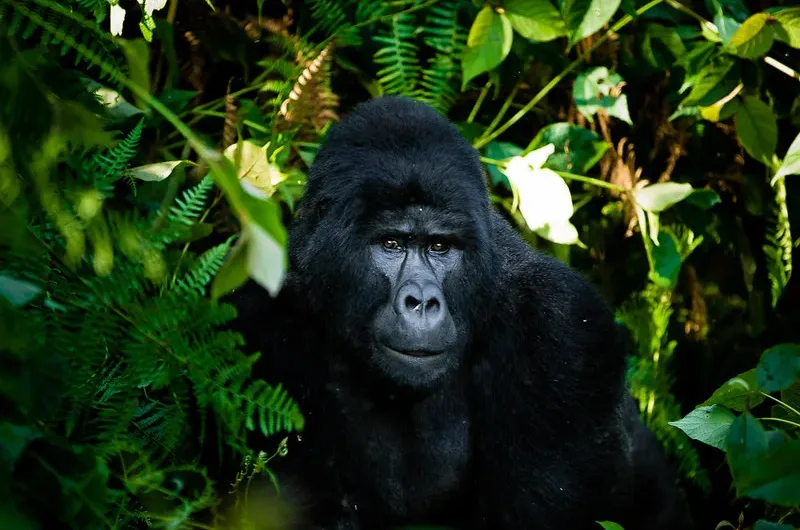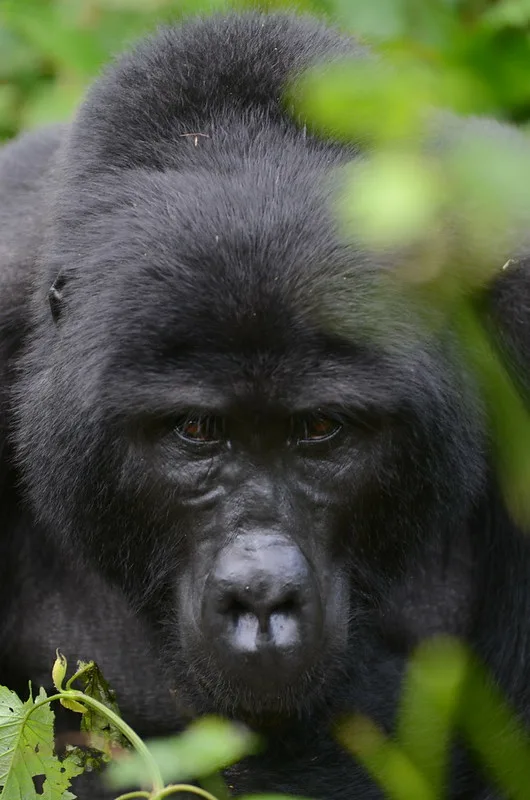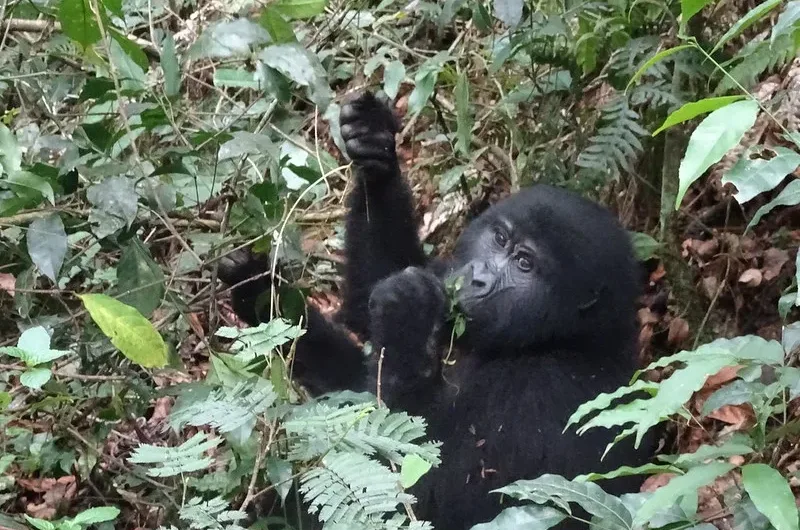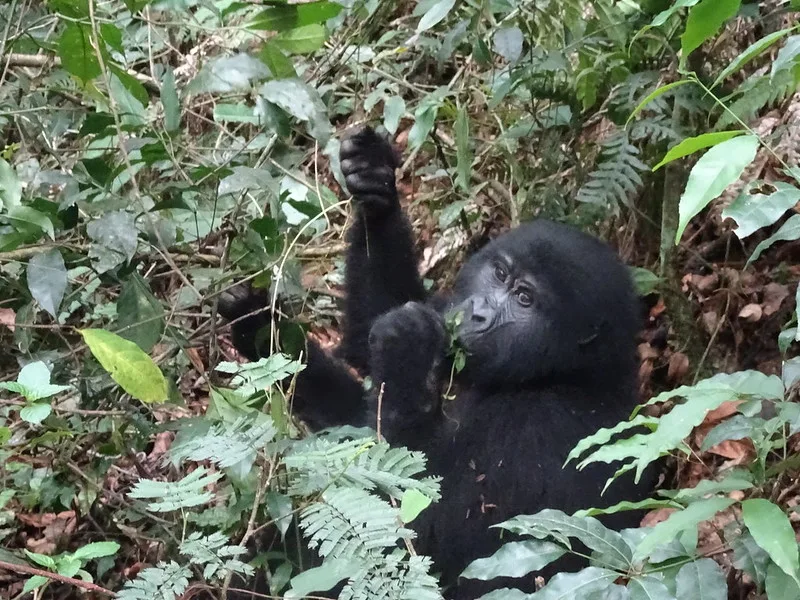History of gorilla trekking in Bwindi Impenetrable National Park
The first gorilla family, Mubare, was completely acclimated and made available to the public for gorilla trekking experiences in the early 1990s, marking the beginning of gorilla trekking in Bwindi Impenetrable National Park. After the first party of visitors walked acclimated mountain gorillas in 1993, other gorilla families were habituated to draw in more tourists, and the rest is history.
Three more gorilla families—Rushegura, Habinyanja (in the north), and Nkuringo (in the south)—were habituated as a result of the public’s interest in trekking gorillas in Uganda, increasing the number of gorilla groups to four by 3004. More than 19 gorilla families may be found in Bwindi Impenetrable National Park, which is divided into four areas in the south, north, and east of the forest.
As of right now, a gorilla permit is needed in order to hike mountain gorillas.
In 2015, the price of each gorilla permit, which allowed visitors to spend an hour with habituated mountain gorillas, was raised to USD 500. The number of habituated gorilla families expanded to nine groups as a result of the increased demand for gorilla licenses.
The four districts of Buhoma, Ruhija, Nkuringo, and Rushaga are home to 19 habituated gorilla families in Bwindi Impenetrable National Park. As a result of this, there were more mountain gorillas since more people were traveling to view them. There are currently more than 1000 mountain gorillas in the globe, including more than 400 in Bwindi Impenetrable National Park.
Since Uganda was commemorating 50 years of independence, the Uganda Wildlife Authority further enriched the legacy of Bwindi gorilla trekking in 2013 by introducing low-season and reduced gorilla permits as a way to give back to the community. Permits were lowered from USD 500 to USD 350 in May, April, and November.
Following the COVID-19 epidemic, they were then raised to USD 450 in 2016, 2017, and 2021. Additionally, new lodges have been built in every region to accommodate tourists. As of right present, there are regular flights and a charter to Bwindi Impenetrable National Park, so visitors can choose to drive or fly there.
Bwindi Impenetrable National Park
In 1942, the forest reserve known as Bwindi Impenetrable National Park was established. It is now known as Bwindi Impenetrable National Park after being elevated to a national park in 1992.
Later, in 1994, Bwindi National Park was designated a World Heritage site.
The indigenous term “Bwindi” means “impenetrable,” and this forest is certainly dense with tangled flora that has developed over time. This forest’s twofold name fits its appearance since it has a number of plants that are believed to have survived for thousands of years.
Volcanic activity has dominated the landscape of Bwindi Impenetrable National Park, forming plateaus and hills where creepers grow, even on slick slopes.
Rainfall is unpredictable in the tropical rainforest of Bwindi Impenetrable National Park. The woodland receives around 2390 mm of rain on average each year.
This woodland experiences temperatures ranging from 7 degrees Celsius to almost 20 degrees Celsius.
About 10 primate species, including mountain gorillas, chimpanzees, red-tailed monkeys, black and white colobus monkeys, grey-cheeked and mangabey, and others, may be found in this biosphere reserve.
When it comes to birdwatching in Uganda, the greatest place to put on your itinerary is Bwindi Impenetrable National Park. An estimated 350 different bird species may be found in the woodland. The finest place to go birdwatching in this woodland is the Mubwindi marsh. It’s easy to identify and locate the birds here. Among the birds you could see are the collared Apalis, African Hill Babbler, Rwenzori Batis, and Western Green Tinkerbird.
Where in Bwindi Impenetrable National Park Can I Go Gorilla Trekking?
For administrative purposes, Bwindi Impenetrable National Park is separated into four regions. These locations include the Rushaga area in the southern portion of Bwindi, the Buhoma area in the north, and the Ruhija area in the east of the Nkuringo area.
There are habituated gorilla families in each of these regions that are now accessible to tourists. There are presently 19 gorilla families in Uganda that are accessible to tourists, 18 of which are located in Bwindi Forest and one in Mgahinga Forest. The Rushegura, Mubare, Oruzogo, Bweza, Nkuringo, Bitukura, and other gorilla families are among those found in Bwindi Impenetrable National Park.
To enter any part of Bwindi Park, you need to get a gorilla permit. However, before booking lodging, you must also be aware of the location where your Bwindi National Park gorilla permit is reserved. This is because there is a lot of space between places in this huge forest, and the roads are also in bad shape. As a result, we do not recommend that travelers buy a gorilla permit in one location and spend the night in another.
Other Activities in Bwindi Impenetrable National Park: Ideal Stroll
In addition to gorilla trekking, Bwindi is a primate sanctuary. On a nature or primate walk, you can likely see primates such as chimpanzees, blue monkeys, grey-cheeked mangabeys, red-tailed monkeys, L’hoest, black and white colobus, and others.
Bwindi Impenetrable National Park Birdwatching
Uganda’s Beyond Impenetrable National Park is a birder’s paradise. More than 350 bird species call it home. Therefore, you have a good possibility of seeing more than 100 different bird species when you go gorilla trekking in the Ruhija sector of Bwindi.
The best montane forest birds in Africa may be found in Bwindi Forest; about 23 out of 24 species are Albertine endemics to Uganda. The Bwindi forest, which spans from montane to lowland regions, is located in the rough Kigezi highlands of southwest Uganda.
Among the species you could see are the collared Apalis, Rwenzori Batis, Montane Sooty Boubou, and red-faced woodland warblers.
Walks in the Community
Discover more about the lives of the locals during the Buhoma community stroll and cultural events. You might be able to visit a local homestead, engage in traditional healing, participate in local brewing, and more.
A visit to a traditional medicine man, a banana beer maker, a blacksmith, and other locals are all part of the Nkuringo community tour.
How to Reserve Permits for Bwindi Impenetrable National Park
Reservations must be made in advance for your gorilla trekking permits to enter Bwindi Impenetrable National Park.
If you are a do-it-yourself visitor, take note of the location where your gorilla permit is reserved.
Make a note of when you would want to go gorilla trekking and how many individuals you would want to bring.
Tell us when you would like to go gorilla trekking, and our safari specialist will check with the Uganda Wildlife Authority to see if there are any gorilla permits available.
If the availability is favorable, we encourage our clients to get their permits as soon as possible to prevent last-minute anxiety when there aren’t any more available.
Following purchase, we ask for personal information such as your complete name, nationality, birthdate, passport expiration date, and other facts.
Some of these facts are filled out on your certificate after completing the gorilla walk, and they are sued for record purposes.
Reservations for lodging in Bwindi Impenetrable National Park for gorilla trekking
Bwindi Impenetrable National Park’s lodging options are categorized as luxury, mid-range, or budget. In order to reserve lodging, you also need to take note of the location where your gorilla permits are booked, as previously mentioned.
Among the lodging options available in Bwindi Impenetrable National Park are
Among these are Ruhija Safari Lodge, Broadbill Lodge, Lake Kitandara Tented Camp, Silverback Lodge, Mahogany Springs, Buhoma Lodge, Volcanoes Bwindi Lodge, Engage Lodge, Gorilla Resort, Clouds Lodge, and Nkuringo Safari Lodge.
Which Part of Bwindi Impenetrable National Park Is Best for Gorilla Trekking?
No matter where you travel on your gorilla journey, there is no better experience than seeing mountain gorillas. You forget all you may have endured to go gorilla trekking during that enchanted moment in front of the mountain gorillas. People’s expectations about what they want to see when they encounter mountain gorillas, however, vary.
When they see a gorilla family with several babies, a huge family, playful family members, and others, some people want to feel wonderful.
Some people want to hike the Bwindi Impenetrable National Park’s most accessible gorilla family, but it might be challenging to do so since the mountain gorillas’ whereabouts vary according on the forest’s conditions.
Mountain gorillas may be easily tracked when their food is nearby, and after it is gone, they will go for other feeding areas, which you will need to find. Regretfully, this also explains why it is unknown how long it took to track down the mountain gorillas.
The mountain gorillas may be forced to leave their area or even become part of the winning gorilla family even if they lose a fight with another family. In the wild, mountain gorillas play the game of survival of the fittest.
Gorilla trekking in Bwindi Impenetrable National Park: How Hard Is It?
You should anticipate hiking several ridges and plateaus because the terrain in the Bwindi Impenetrable National Park is rough. You must go to where the mountain gorillas are relaxing since they occasionally like eating from the slopes.
You must follow them into the valley when they start to slope. Nothing can stop them from traveling freely across the jungle since they are extremely mobile animals.
If the mountain gorillas could be eating in a thicker area, the ranger guide cuts through the creepers with a machete.
To avoid experiencing muscle strains when looking for the mountain gorillas, you need to be somewhat fit. To complete the full experience, you will need to extend your muscles a bit more because of this.
Is it safe to go gorilla trekking in the impenetrable forest of Bwindi?
Because ranger guides are so cautious about safeguarding the region, gorilla trekking in Bwindi Impenetrable National Park is safe. To maintain peace and order in this area, they collaborate with other Ugandan security services.
When gorilla trekking, you should also be mindful of your own safety by avoiding carrying large sums of cash in public since this may draw criminals.
When you bring valuables on a gorilla trekking safari, you run the risk of making yourself uncomfortable and drawing thieves.
If you contract food sickness while eating street food during your gorilla trekking safari days, it might ruin your entire safari experience.
When visiting for gorilla trekking, avoid illegal activities like as drug trading as you might end up in African jails.
Carry only a few, relevant luggage that you can keep an eye on to avoid losing them or taking up too much legroom.
Never go into the forest without a ranger guide since there are other untamed inhabitants there that might pose a serious threat to you if you are alone.
The Bwindi Impenetrable National Park packing list includes tracking boots that are secure enough to use during the journey and trek in order to find the mountain gorillas, should they be residing on the slopes.
a camera so you may document every moment of your journey to find the mountain gorillas. Trekking with gorillas is a once-in-a-lifetime event that should be remembered for every occasion.
Wear a raincoat in case it starts to rain. The most of the day is spent in the wilderness wet, and it occasionally rains unexpectedly in this forest.
snacks to eat in case the lengthy hike makes you hungry. You eat breakfast too early to carry you through the day.
If your head becomes too wet from the water dropping off the tree leaves, you may cover it with a folding safari hat.
A first aid package for unexpected emergencies in the woods
A torch to guide you in the event of a nighttime power outage. The majority of the lodges around the park were powered by solar energy.
a warmer to prevent coldness, particularly in the early morning and late afternoon.
If you want to maintain a tighter grip, you might wear garden gloves to prevent injuries to your palms.
Use insect repellent to keep stinging insects away from you when you’re out in the wild. They might hurt you.
Wear long-sleeved clothing to prevent injuries to your body when in the woods.
Carry a foldable water body with you in case you grow thirsty while exploring the wilderness.
In the bush, sunglasses can shield your eyes from buzzing insects.
A nightgown to put on before bed.
toiletries that are appropriate for your skin type in case the amenities offered by the lodge don’t satisfy you.
To carry your gorilla trekking supplies in case they fall during hiking, choose a lightweight, waterproof backpack. They don’t disperse all over the place.
An additional battery to swap out in the event that one gets low in the wilderness. You must record each thrilling moment.
Gorilla Trekking Dos and Don’ts in Bwindi Impenetrable National Park
The mountain gorillas should not be fed. Since they are untamed creatures, they have to find their own food.
Never go into the forest without a ranger guide accompanying you.
Since spitting on plants contaminates the food that animals rely on, it is prohibited.
Because littering might change the forest’s natural characteristics, which are essential to mountain gorillas, it is prohibited in the forest.
Avoid creating noise in the forest since it might frighten the gorillas and other forest inhabitants.
Before beginning the gorilla journey, offer to stay behind if you have a cold, cough, or any other contagious illness. Human diseases are quite likely to affect mountain gorillas.
No, taking pictures of mountain gorillas using flash.
Once you’ve found them, stay around 8 meters away from the mountain gorillas.
No food or smoking is permitted within 300 meters of the mountain gorillas.
You are only permitted to spend an hour with the mountain gorillas.
